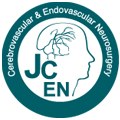- Apply for Authority
- P-ISSN2234-8565
- E-ISSN2287-3139
 ISSN : 2234-8565
ISSN : 2234-8565
Imaging follow-up strategy after endovascular treatment of Intracranial aneurysms: A literature review and guideline recommendations
Choi Jae Hyung (Department of Neurosurgery, Busan-Ulsan Regional Cardiocerebrovascular Center, Dong-A University Hospital, Busan, Korea)
Huh Chae-Wook (Department of Neurosurgery, Dong-Eui Hospital, Busan, Korea)
Kim Chang Hyeun (Department of Neurosurgery, Pusan National University Yangsan Hospital, Yangsan, Korea)
Chang Chul Hoon (Department of Neurosurgery, Yeungnam University Medical Center, Daegue, Korea)
KWON Soon Chan (Department of Neurosurgery, Ulsan University Hospital, Ulsan, Korea)
Kim Young Woo (Department of Neurosurgery ,The Catholic University of Korea, Uijeongbu St. Mary’s Hospital, Uijeongbu, Korea)
Sheen Seung Hun (Department of Neurosurgery, CHA Bundang Medical Center of CHA University, Seongnam, Korea)
Park Sukh Que (Department of Neurosurgery, Soonchunhyang University Seoul Hospital, Seoul, Korea)
Ko Jun Kyeung (Department of Neurosurgery, Pusan National University Hospital, Busan, Korea)
Ha Sung-kon (Department of Neurosurgery, Korea University Medical Center Ansan Hospital, Ansan, Korea)
Jeong Hae Woong (Department of Neurosurgery, Inje University Busan Paik Hospital, Busan, Korea)
Kang Hyen Seung (Department of Neurosurgery, Seoul National University Hospital, Seoul, Korea)
- Downloaded
- Viewed
Abstract
Objective: Endovascular coil embolization is the primary treatment modality for intracranial aneurysms. However, its long-term durability remains of concern, with a considerable proportion of cases requiring aneurysm reopening and retreatment. Therefore, establishing optimal follow-up imaging protocols is necessary to ensure a durable occlusion. This study aimed to develop guidelines for follow-up imaging strategies after endovascular treatment of intracranial aneurysms.Methods: A committee comprising members of the Korean Neuroendovascular Society and other relevant societies was formed. A literature review and analyses of the major published guidelines were conducted to gather evidence. A panel of 40 experts convened to achieve a consensus on the recommendations using the modified Delphi method.Results: The panel members reached the following consensus: 1. Schedule the initial follow-up imaging within 3-6 months of treatment. 2. Noninvasive imaging modalities, such as three-dimensional time-of-flight magnetic resonance angiography (MRA) or contrast-enhanced MRA, are alternatives to digital subtraction angiography (DSA) during the first follow-up. 3. Schedule mid-term follow-up imaging at 1, 2, 4, and 6 years after the initial treatment. 4. If noninvasive imaging reveals unstable changes in the treated aneurysms, DSA should be considered. 5. Consider late-term follow-up imaging every 3–5 years for lifelong monitoring of patients with unstable changes or at high risk of recurrence.Conclusions: The guidelines aim to provide physicians with the information to make informed decisions and provide patients with high-quality care. However, owing to a lack of specific recommendations and scientific data, these guidelines are based on expert consensus and should be considered in conjunction with individual patient characteristics and circumstances.
- keywords
- Intracranial aneurysm, Endovascular procedure, Consensus, Delphi technique
- Downloaded
- Viewed
- 0KCI Citations
- 0WOS Citations
